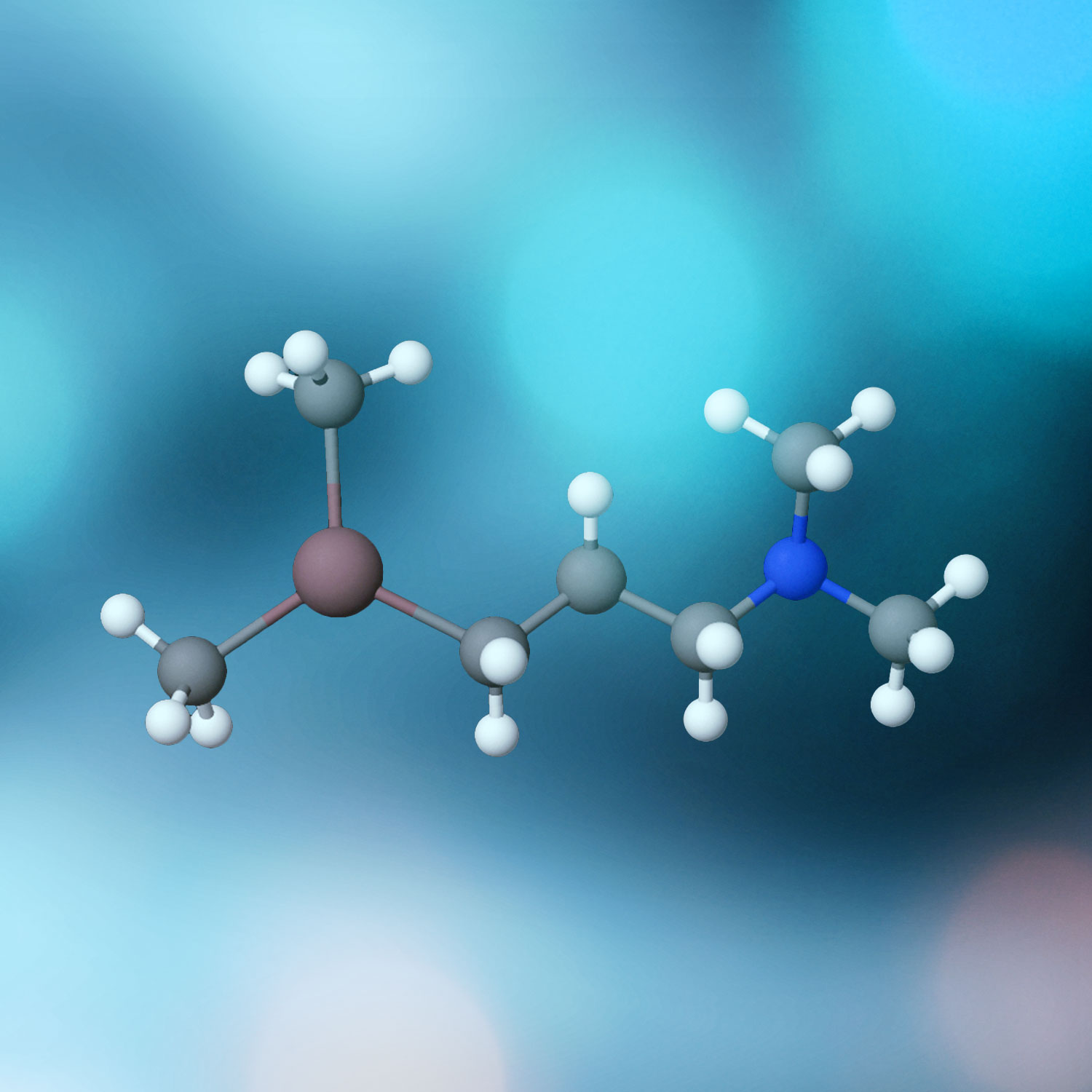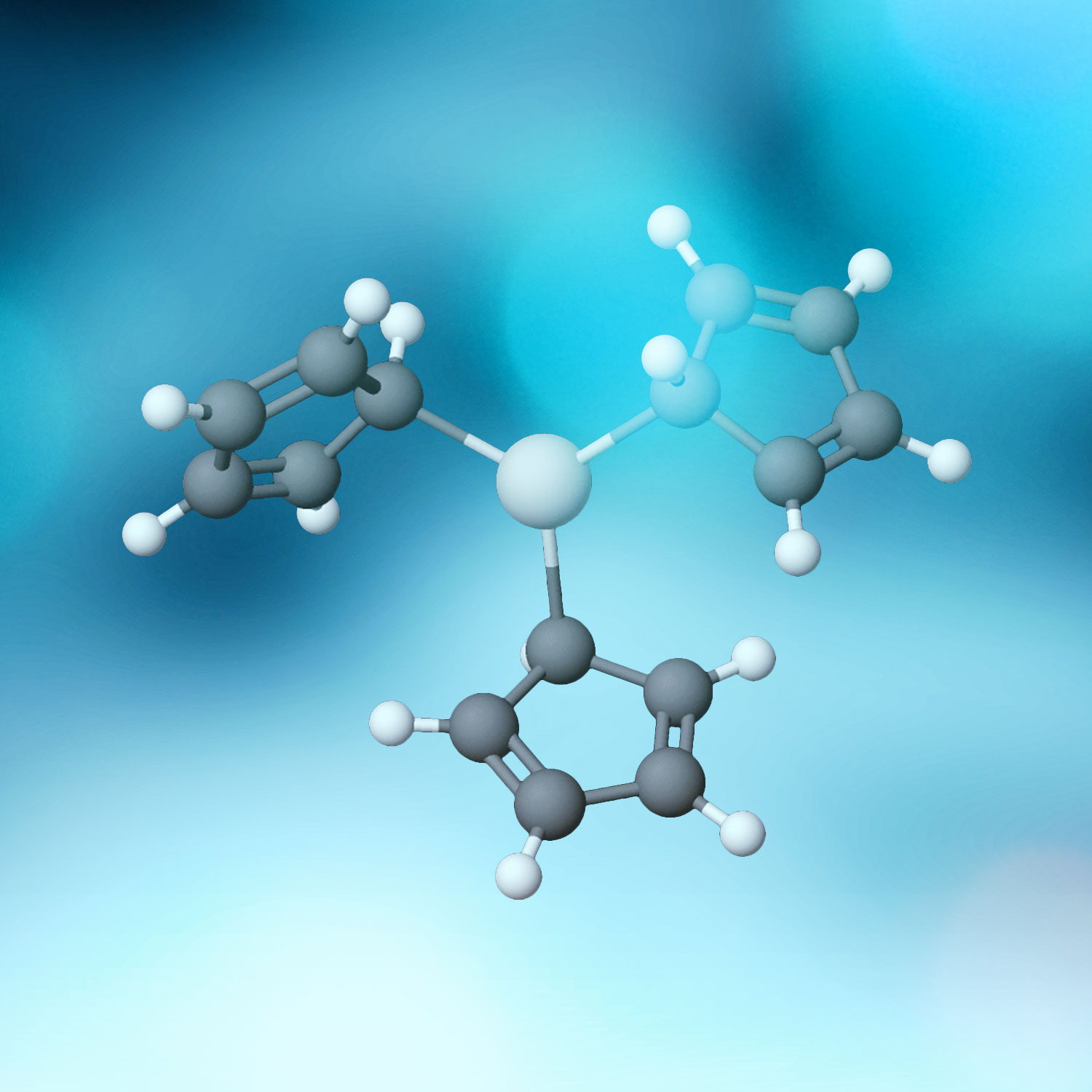
DADI
(Dimethylaminopropyl)dimethylindium
Features:
Liquid, non-pyrophoric indium precursor
Application:
IGZO, ITO, compound semiconductor
DADI is intramolecularly stabilized by the aminopropyl-group which causes the liquid state and optimal decomposition behavior in deposition processes. DOCK also works on modifications of the ligand structure. DADI, for instance, is a very promising candidate for low-temperature compound semiconductor deposition where unintentional carbon incorporation presents a problem (e.g. GaInNAs). DOCK is currently scaling DADI due to increasing demand.
IBGe
Isobutylgermane
Features:
Liquid, long-term stable, non-pyrophoric germanium precursor
Application:
SiGe, Ge doping
IBGe is a highly volatile liquid germanium precursor, which offers significantly safer handling conditions than the standard pyrophoric gases GeH4 or Ge2H6. The isobutyl group combines both, a huge gain in stability and lowest carbon incorporation, while the germanium still contains three active hydrogen atoms.


Cp3Sc
Tris(cyclopentadienyl)scandium
Features:
Solid scandium precursor with easily controllable vapor pressure and temperature stability up to the decomposition point
Application:
AlScN for high-frequency devices
Scandium precursors:
Cp3Sc is one of very few scandium-based precursor materials which offer a viable vapor pressure, but do not contain any oxygen atoms. Due to the high thermal stability and volatility of the cyclopentadienyl ligands, there is little to no carbon incorporation and a well-defined, small window of decomposition temperature.
(MCp)3Sc
Tris(methylcyclopentadienyl) scandium
Features:
Solid scandium precursor with higher vapor pressure, but lower thermal
Application:
AlScN for high-frequency devices
(MCp)3Sc is an evolution of the Cp3Sc precursor toward a higher vapor pressure, which comes with a lower thermal stability. The usage of the asymmetrical methylcyclopentadienyl ligands lowers the melting point, therefore increases the vapor pressure, but also broadens the temperature window of decomposition.
